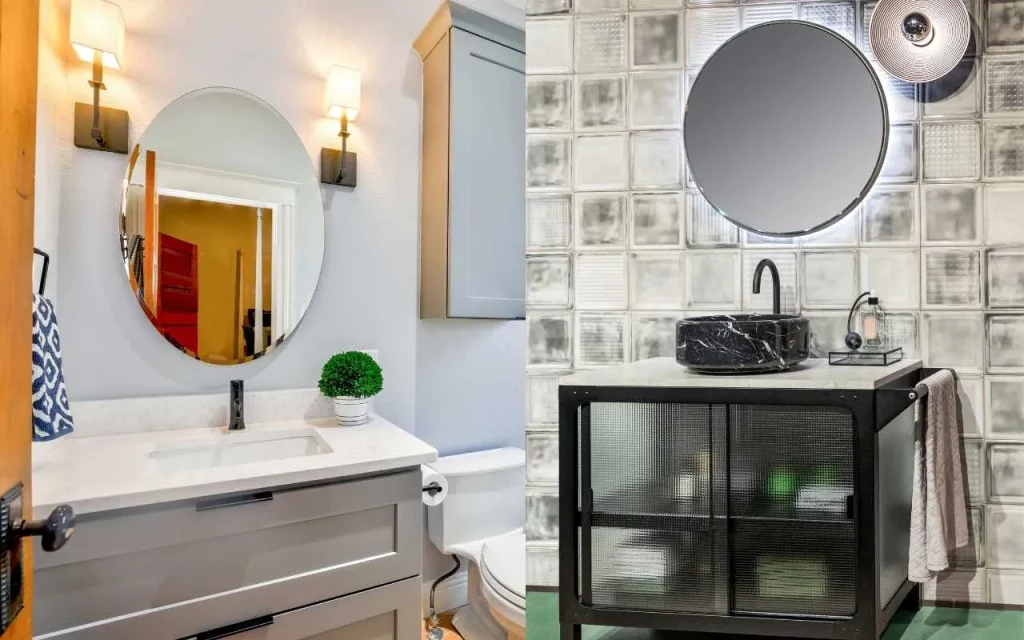Designing a bathroom can be an exciting yet challenging task. Whether you’re working with a spacious master bath or a compact ensuite, the key is to balance functionality with aesthetics. Start by analyzing your current space and identifying your needs. Explore various design styles, from modern to classic, to find inspiration that suits your taste. Consider the layout carefully, ensuring that essential fixtures like the toilet, basin, and shower are optimally placed. Incorporate smart storage solutions and lighting to enhance the room’s functionality and ambiance. With thoughtful planning and creative ideas, you can transform your bathroom into a stylish and practical sanctuary.
How Should I Style My Bathroom?
Styling your bathroom involves a blend of functionality and aesthetics. Here are some tips to help you create a beautiful and practical space:
1. Choose a Focal Point
Select one key element, such as a freestanding bathtub, a stylish vanity, or a luxurious tiled shower, to be the star of the room.
2. Symmetrical Layouts
If your bathroom has symmetrical proportions, enhance this feature by aligning architectural elements like windows and fixtures.
3. Maximize Space
Ensure there’s enough space around each fitting for comfortable use. Consider inward-opening doors or a wet area with a single glass divider to open up the space.
4. Colour Scheme
Light colours can make a small bathroom look bigger. Opt for whites, soft greys, or warm beiges. For a touch of elegance, consider rich earthy hues or geometric tilework.
5. Smart Storage
Use closed storage to keep the space tidy and clutter-free. Floating vanities and wall-hung toilets can also make the room feel more spacious.
6. Lighting
Good lighting is crucial. Incorporate layers of light, such as task lighting around the vanity and ambient lighting for the bath area. Consider backlit mirrors for a modern touch.
7. Flooring
Choose flooring that makes the space look bigger, like large tiles or light-coloured materials. Avoid materials unsuitable for wet environments, such as wood.
8. Accessories
Add finishing touches with stylish accessories like towels, toiletries, and plants to bring the whole design together.
By focusing on these elements, you can create a bathroom that is both stylish and functional.
What Is the Current Trend for Bathrooms?
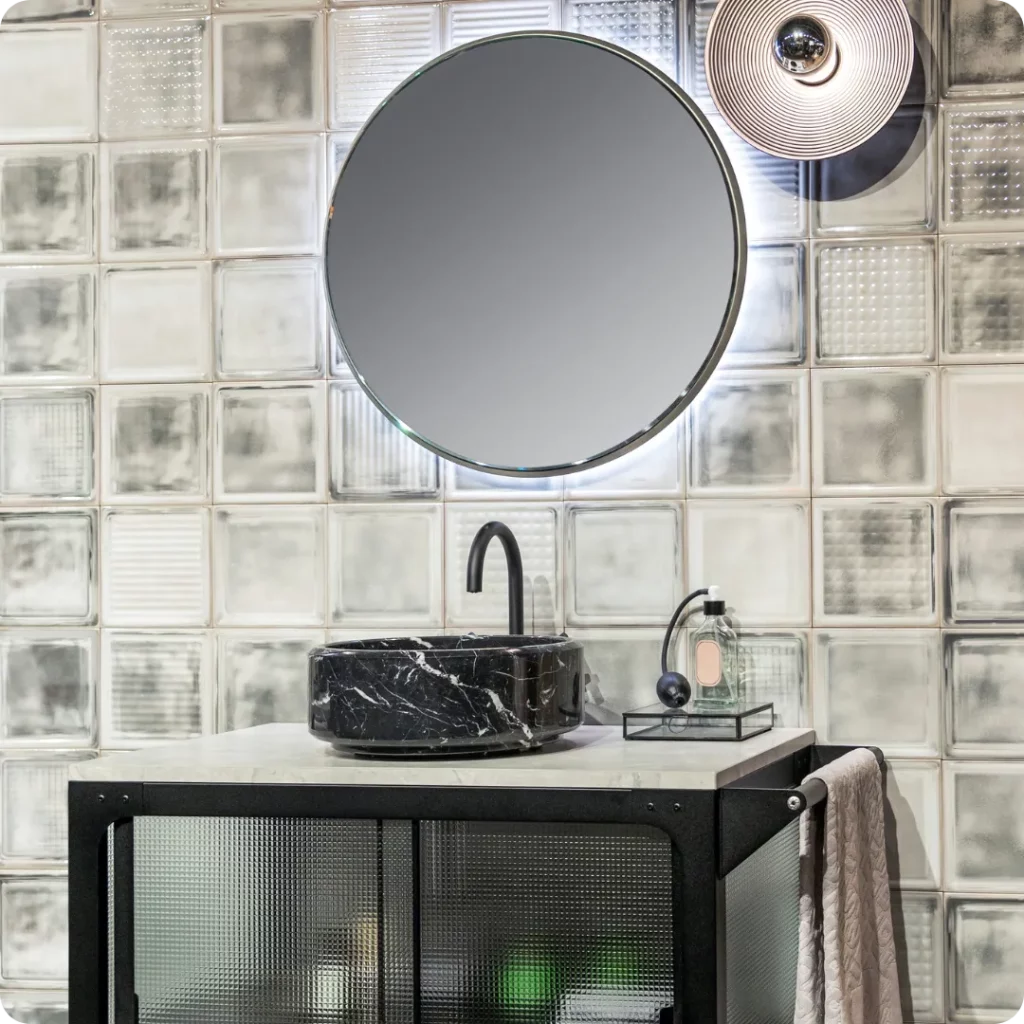
The trend for bathrooms in 2024 focuses on a blend of functionality, sustainability, and modern aesthetics. Here are some key trends to look out for:
1. Backlit Mirrors
These are not only energy-efficient but also add a sleek, modern touch to the bathroom. They eliminate shadows and provide excellent lighting for grooming.
2. Rich Earthy Hues
Earthy tones are in vogue, creating a serene and natural atmosphere. Think shades inspired by nature, like terracotta, olive green, and warm browns.
3. Geometric Tilework
Bold geometric patterns on tiles can add a striking visual element to the bathroom, making it look modern and stylish.
4. Sliding Doors
Ideal for small bathrooms, sliding doors save space and add a contemporary feel.
5. Closed Storage
Keeping the bathroom clutter-free with closed storage solutions is a trend that combines practicality with a clean, modern look.
6. Glass Shower Doors
These create the illusion of more space and add a luxurious, glossy appearance to the bathroom.
By incorporating these trends, you can create a bathroom that is both stylish and up to date with the latest design innovations.
How Can I Make My Small Bathroom Look Expensive?
Making a small bathroom look expensive involves strategic choices in design, materials, and accessories. Here are some tips to achieve a luxurious look:
1. Use High-Quality Materials
Opt for materials like marble, granite, or high-end tiles. Terrazzo floors and walls are also a great choice for a sophisticated look.
2. Install a Floating Vanity
A floating vanity not only saves space but also adds a modern, upscale touch. Choose one with a sleek design and high-quality finishes.
3. Install Under-Cabinet Lighting
This adds a touch of elegance and helps illuminate dark spaces, making the bathroom look more spacious and inviting.
4. Add High-End Fixtures
Invest in quality brassware and fixtures. Choose designs that are both functional and stylish.
5. Incorporate a Tiled Shower with Glass Shower Doors
Glass doors create the illusion of more space and add a sleek, modern look.
6. Accessorize Thoughtfully
Use high-quality towels, stylish toiletries, and elegant decor items. A few well-chosen accessories can elevate the entire look of the bathroom.
By focusing on these elements, you can transform your small bathroom into a space that looks and feels expensive.
What Are Three Types of Bathroom Layouts?
Here are three common types of bathroom layouts:
1. Statement Bath Layout
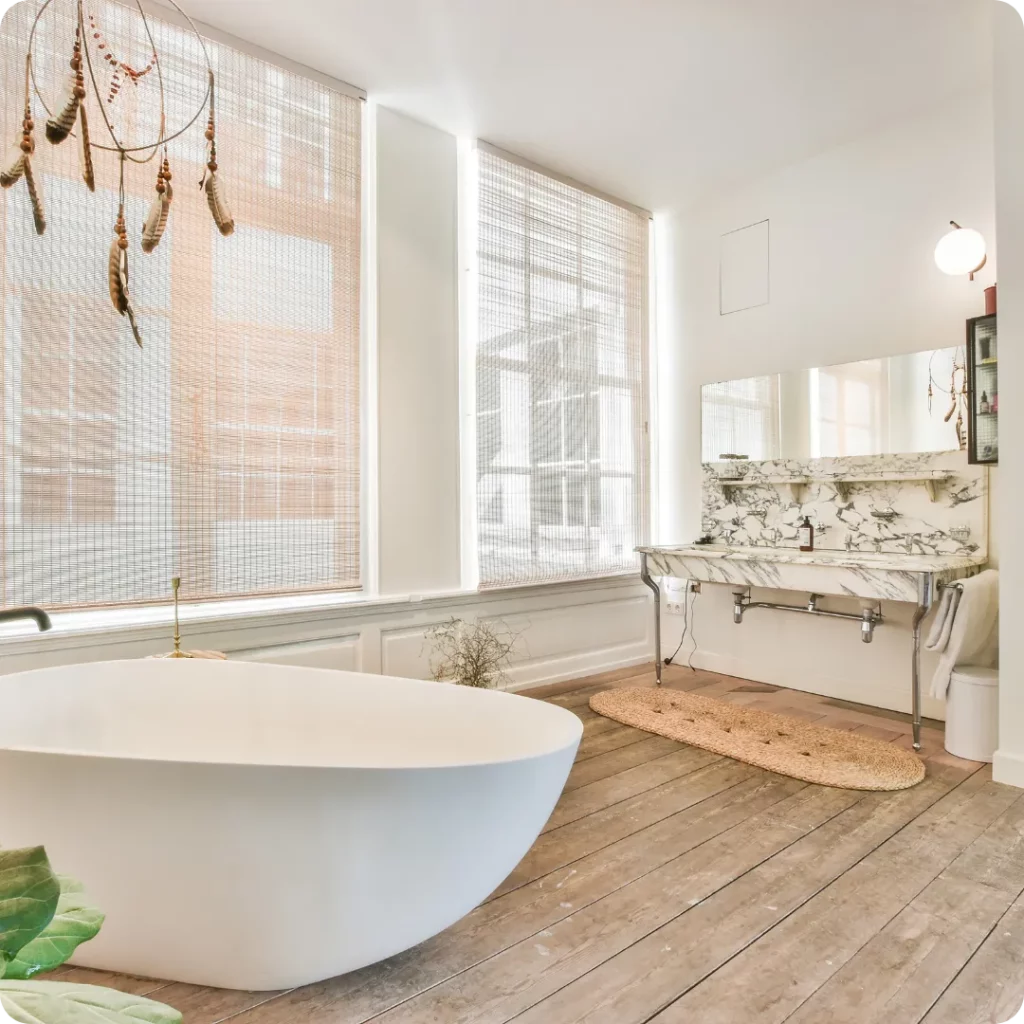
- Description: This layout features a freestanding bath as the focal point of the room.
- Ideal For: Larger bathrooms where the bath can be placed in a prominent position, such as the centre of the room or near a window.
- Benefits: Creates a luxurious and spa-like atmosphere.
2. Over-Bath Shower Layout
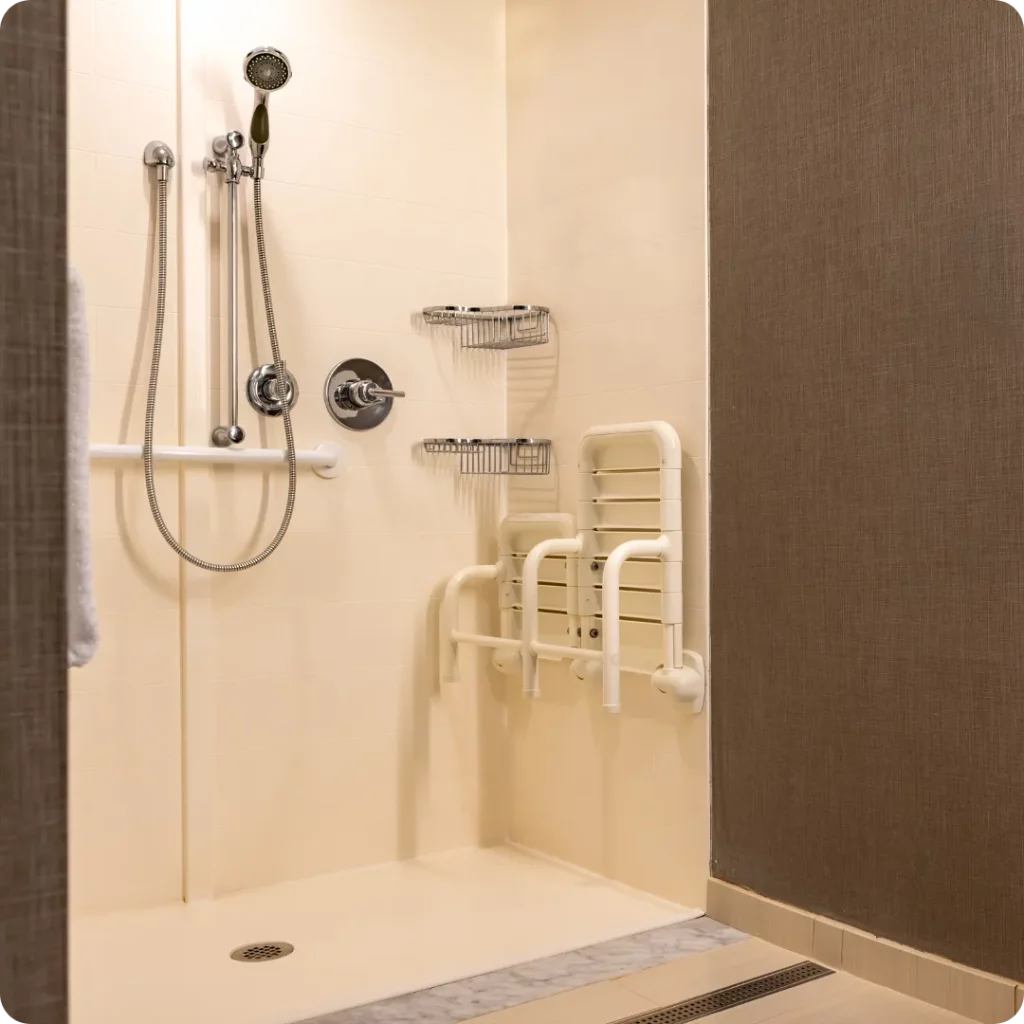
- Description: Combines a bathtub and a shower in one space, with the shower installed over the bath.
- Ideal For: Smaller bathrooms where space is limited but both a bath and shower are desired.
- Benefits: Maximizes functionality in a compact space, making it ideal for families with children.
3. Shower Room Layout
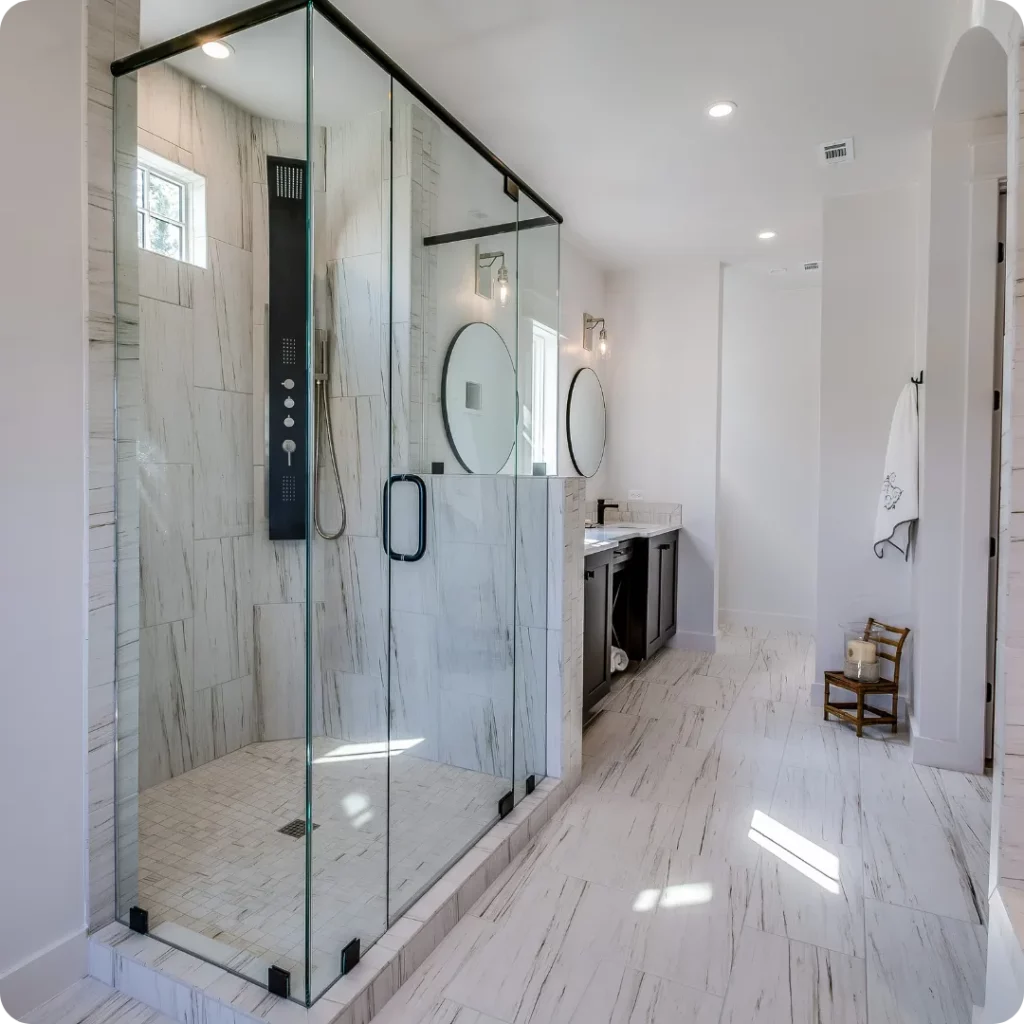
- Description: Also known as a wet room, this layout features an open shower area without a traditional shower enclosure.
- Ideal For: Small bathrooms or ensuites where space is at a premium.
- Benefits: Creates a seamless, open look and can make the bathroom feel larger. It also simplifies cleaning and maintenance.
These layouts cater to different needs and preferences, allowing you to choose the one that best fits your space and lifestyle.
How Do You Arrange a Simple Bathroom?
Arranging a simple bathroom effectively involves thoughtful placement of fixtures and maximizing space. Here are some tips:
1. Prioritize the Layout
- Toilet Placement: Start by determining the location of the toilet, as it is often the least flexible due to plumbing constraints.
- Basin and Vanity: Place the basin and vanity in a convenient location, ideally near the entrance for easy access.
- Shower/Bath: Position the shower or bath in a way that maximizes space. For small bathrooms, consider an over-bath shower or a corner shower unit.
2. Create a Focal Point
Choose one key element, such as a stylish vanity, a beautiful mirror, or a unique tile pattern, to serve as the focal point of the bathroom.
3. Optimize Storage
- Use wall-mounted cabinets or floating vanities to save floor space.
- Incorporate shelves or niches in the shower area for storing toiletries.
4. Ensure Adequate Lighting
- Use a combination of task lighting around the mirror and ambient lighting for the overall space.
- Consider adding under-cabinet lighting to brighten up dark areas.
5. Keep It Clutter-Free
- Use closed storage options to keep toiletries and other items out of sight.
- Minimize countertop items to maintain a clean and simple look.
6. Choose Light Colours
Light colours can make a small bathroom feel larger and more open. Consider whites, soft greys, or pastels for walls and tiles.
7. Use Mirrors
Large mirrors can create the illusion of more space and reflect light, making the bathroom feel brighter.
8. Consider the Door Swing
If space is tight, consider using a sliding door or a door that swings outward to save space inside the bathroom.
By following these tips, you can create a simple, functional, and aesthetically pleasing bathroom layout.
Colours in Bathrooms
In a small bathroom, light and neutral colours work best to create a sense of space and openness. Here are some effective options:
1. White
- Effect: Reflects light and makes the space feel larger and airier.
- Tip: Use different textures and finishes to add depth and interest.
2. Soft Greys
- Effect: Provides a modern and sophisticated look while keeping the space light.
- Tip: Pair with white fixtures and accessories for a clean, cohesive look.
3. Pastels
- Effect: Soft pastel colours like light blue, mint green, or blush pink add a touch of colour without overwhelming the space.
- Tip: Use pastel colours on walls or accessories to create a calming atmosphere.
4. Beige and Cream
- Effect: Warm neutral tones make the bathroom feel cozy and inviting.
- Tip: Combine with natural materials like wood or stone for a harmonious look.
5. Light Blues and Greens
- Effect: These colours evoke a sense of tranquillity and can make the bathroom feel more spacious.
- Tip: Use these colours on walls or tiles to create a serene environment.
Using these colours can help make a small bathroom feel larger, brighter, and more welcoming.
Conclusion
Designing a bathroom that is both functional and visually appealing requires careful planning and consideration of various elements such as layout, colour schemes, and modern trends. By focusing on efficient use of space, especially in smaller bathrooms, and incorporating light, neutral colours, you can create an open and inviting atmosphere. Whether you are renovating a large family bathroom or a compact en-suite, these design ideas and tips will help you transform your space into a stylish and comfortable sanctuary.


